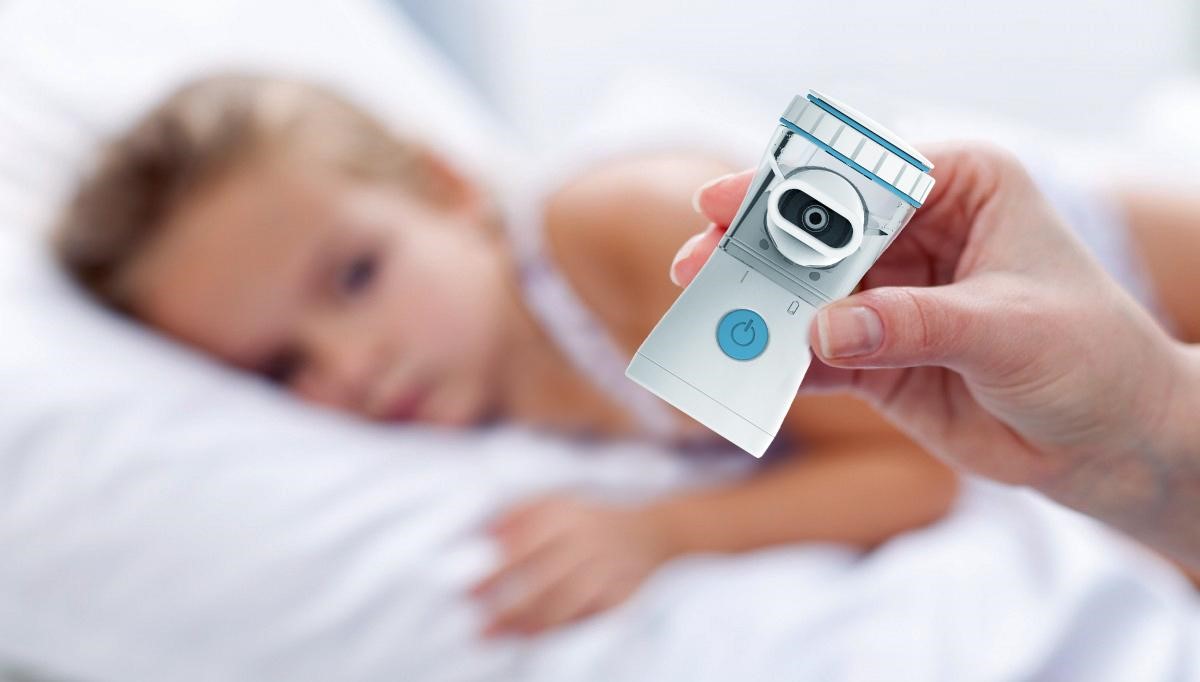2015
Nov
26
News
An Easy Nebulizer for a Better Aerosol Delivery
The principle of nebulizer therapy can be tracked as far back as 4000 years ago. Since the earliest days of recorded human history, people have been suffering from throat and chest pains. Even Hippocrates recommended a form of vapor therapy to help alleviate pains. The technology of nebulization has changed a lot since then, but the fundamentals of medicinal mist therapy remain similar.
Today, many varieties of inhaled therapy are available on the open market, but not all provide the same degree of effectiveness. Generally, a medicine provides relief when it bypasses the oropharynx and reaches the lungs, and the efficacy is also affected by the dose delivered to the target site. Industry research teaches that the smaller the mist particle, the more likely it reaches lower respiratory tract. Specifically, particles between 1 and 5um make their way to the smaller airways and alveoli in the lungs. Particles between 5 and 10 um usually end up in the oropharynx and large conducting airways, and anything greater than 10 microns in size ends up in the mouth and throat, severely limiting their effectiveness of pulmonary medicine.
Nevertheless, the proper particle size and medicine dose hardly matters when the most critical factor, patient adherence, is not satisfied. Factors that determined aerosol delivery is described by Collins (2009) as the following table. Nebulizers that are too complex to operate or require too much maintenance are unlikely to be used regularly, and patients will not adhere to a regular treatment schedule.
Factors determining aerosol delivery
Aerosol factors
Patient factors
Therefore, practitioners should engage with their patients and discuss the pros and cons of different devices according to their needs. A recommendation for the right device must consider the patient’s age, lifestyle, adherence and motivation to treatment. Additionally, the person’s cognitive and physical ability is also an important consideration, as some devices require a more complex operation than replica patek philippe others. Nevertheless, modern nebulizers with simple operation are often preferred to complex ones, as fewer barriers to treatment could result in better compliance and use rates. Once a device is prescribed, practitioners should evaluate their patients periodically to ensure treatment compliance and effective use in a long run.
Reference : Collins. J R Soc Med. 2009 Jul;102 Suppl 1:11-7.
HCmed’s Pulmogine Mesh Nebulizer receives NMPA Approval.

Today, many varieties of inhaled therapy are available on the open market, but not all provide the same degree of effectiveness. Generally, a medicine provides relief when it bypasses the oropharynx and reaches the lungs, and the efficacy is also affected by the dose delivered to the target site. Industry research teaches that the smaller the mist particle, the more likely it reaches lower respiratory tract. Specifically, particles between 1 and 5um make their way to the smaller airways and alveoli in the lungs. Particles between 5 and 10 um usually end up in the oropharynx and large conducting airways, and anything greater than 10 microns in size ends up in the mouth and throat, severely limiting their effectiveness of pulmonary medicine.
Nevertheless, the proper particle size and medicine dose hardly matters when the most critical factor, patient adherence, is not satisfied. Factors that determined aerosol delivery is described by Collins (2009) as the following table. Nebulizers that are too complex to operate or require too much maintenance are unlikely to be used regularly, and patients will not adhere to a regular treatment schedule.
Factors determining aerosol delivery
Aerosol factors
- Particle size distribution
- Aerosol density
- Hygroscopic properties
- Viscosity and surface tension
- Suspension vs. solution
Patient factors
- Adherence with treatments
- Tidal volume
- Respiratory rate
- Inspiratory flow rate
- Breath-hold time
- Upper airway anatomy
- Lower airway obstruction
- Age
- Cognitive and physical abilities
Therefore, practitioners should engage with their patients and discuss the pros and cons of different devices according to their needs. A recommendation for the right device must consider the patient’s age, lifestyle, adherence and motivation to treatment. Additionally, the person’s cognitive and physical ability is also an important consideration, as some devices require a more complex operation than replica patek philippe others. Nevertheless, modern nebulizers with simple operation are often preferred to complex ones, as fewer barriers to treatment could result in better compliance and use rates. Once a device is prescribed, practitioners should evaluate their patients periodically to ensure treatment compliance and effective use in a long run.
Reference : Collins. J R Soc Med. 2009 Jul;102 Suppl 1:11-7.
HCmed’s Pulmogine Mesh Nebulizer receives NMPA Approval.


